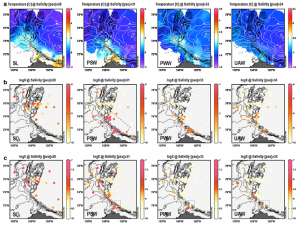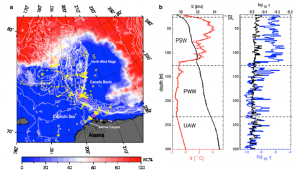Yusuke Kawaguchi
Evaluation and characterization of turbulent mixing in the Chukchi and Bering Sea: implication to the local primary production and global climate change
Research Summary
In the polar seas, the turbulent mixing process and its intensity are prevailingly determined by the absence/presence of sea ice because of frictional damping due to ice-ice interaction. e.g. when ice covered, the water is rarely exposed to the high wind stress and only obtain reduced energy associated with internal waves and small-scale turbulence at depth. With the recent diminishing ice in the Arctic and subarctic, causing the change in the surface boundary condition, the mixing intensity in the shallow and deeper waters has been seemingly enhanced. Meanwhile, the quantitative figures and practical understanding for the Arctic/subarctic mixing are currently not sufficient, and the further data from field research are still in need. In the present subject, we will figure out the specific mechanism of the oceanographic mixing in the Arctic/subarctic water and provide quantitative estimates about the momentum and heat vertical transfer, especially in the shallow seas such as in the Chukchi Sea and Bering Sea. For the present objectives, we perform ship-based microstructure observation to closely analyze the small-scale fluid dynamics. At the same time, other hydrographic dataset such as CTD and ADCP profiles are used in order to parameterize/characterize the turbulent events in the broader regions. In addition, we also attempt to understand how the turbulent mixing in the present seas can impact the biological activities and contribute to the change in the global climate.

Figure 2: (a) Potential temperature, (b) χ and (c) ε on each isopycnal plain in the Pacific-side Arctic Ocean. Acronyms SL, PSW, PWW, UAW mean Surface Layer, Pacific Summer Water, Pacific Winter Water, and Upper Atlantic Water, respectively. (after Kawaguchi et al. 2014)

Figure 1: (a) Geographical positions of microstructure measurements during R/V MIRAI Arctic cruise in September 2009 and 2010 (MR09-03; MR10-05), where red shade indicates high-ice concentration, more than approximately 80%. (b) Typical vertical profiles of temperature and salinity (left) and dissipation rates of turbulent kinetic energy (ε) and small-scale temperature variance (χ).
Principal Investigator:
Yusuke KAWGUCHI
JAMSTEC, physical oceanography for polar oceans, research fellow


